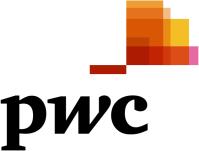The Company also assess our customer’s ability and intention to pay, which is based on a variety of factors including our customer’s historical payment experience and financial condition. Payment terms and conditions vary by contract type, although terms generally include a requirement of payment within 20 days to 60 days. The Company does not have contracts that contain a financing component and does not accept noncash consideration from customers.
For product sale arrangements that are standard inventory products or modified inventory products with an alternative use, revenue is recognized at a point in time when control transfers. Control generally transfers upon shipment or delivery, and delivery is based on the customer instructions. The transaction price for product sales having a performance obligation is the price per unit times the unit quantity ordered and shipped to the customer.
Cash and Cash Equivalents
The Company considers all time deposits, certificates of deposit and other highly liquid financial instruments with maturities of three months or less at date of purchase to be cash equivalents.
The Company maintains its cash in the United States and Canada in bank deposit accounts, which, at times, may exceed US and or Canadian federally insured limits. The Company has not experienced any losses in such accounts and believes it is not exposed to any significant credit risk on cash and cash equivalents.
Trade Accounts Receivable
The Company’s receivables are recorded when revenue is earned and represent claims against third parties that will be settled in cash. The carrying value of the Company’s receivables, net of an allowance of doubtful accounts, represent their estimated net realizable value. The allowance of doubtful accounts is reflected as a reduction to accounts receivable.
The allowance of doubtful accounts is the Company’s best estimate of the amount of probable credit losses in the Company’s existing accounts receivable; however, changes in circumstances relating to account receivable may result in a requirement for additional allowances in the future. The Company determines the allowance based on historical write-off experience, current market trends and, for larger accounts, the ability to pay outstanding balances. The Company continually reviews its allowance for doubtful accounts. Past due balances over 90 days and other higher risk amounts are reviewed individually for collectability. Account balances are charged against the allowance after all collection efforts have been exhausted and the potential for recovery is considered remote.
Inventories
Inventories are stated at the lower of cost or net realizable value, with cost determined based on the weighted–average cost method. Inventories consist of insulation, safety, and environmental products which constitute finished product in a sellable state as of December 31, 2020.
Property and Equipment
Property and equipment are carried at cost, net of accumulated depreciation. Expenditures for additions, renewals or betterments of property and equipment are capitalized. Expenditures on repairs and maintenance are charged to expense when incurred. The Company capitalizes software developed or obtained for internal use. Accordingly, the cost of third-party software, as well as the cost of third-party and internal personnel that are directly involved in application development activities, are capitalized during the application development phase of new software systems projects. Costs during the preliminary project stage and post-implementation stage of new software systems projects, including data conversion and training costs, are expensed as incurred. Depreciation is provided using the straight-line method over the estimated service lives of the related assets. When assets are disposed, the cost and related accumulated depreciation are removed from the accounts and the resulting gain or loss, if any, is recognized in operating income.

